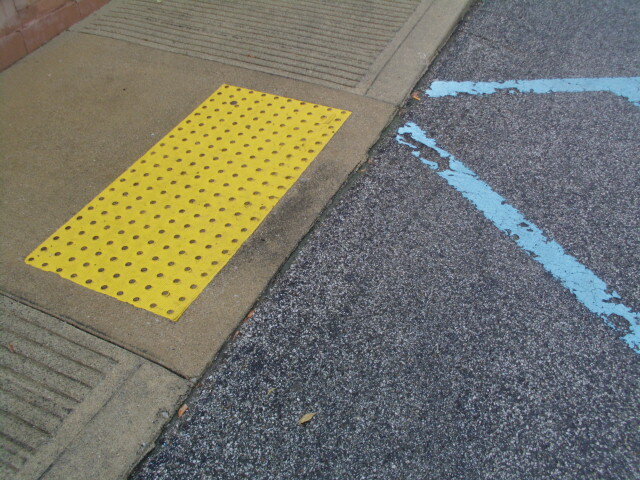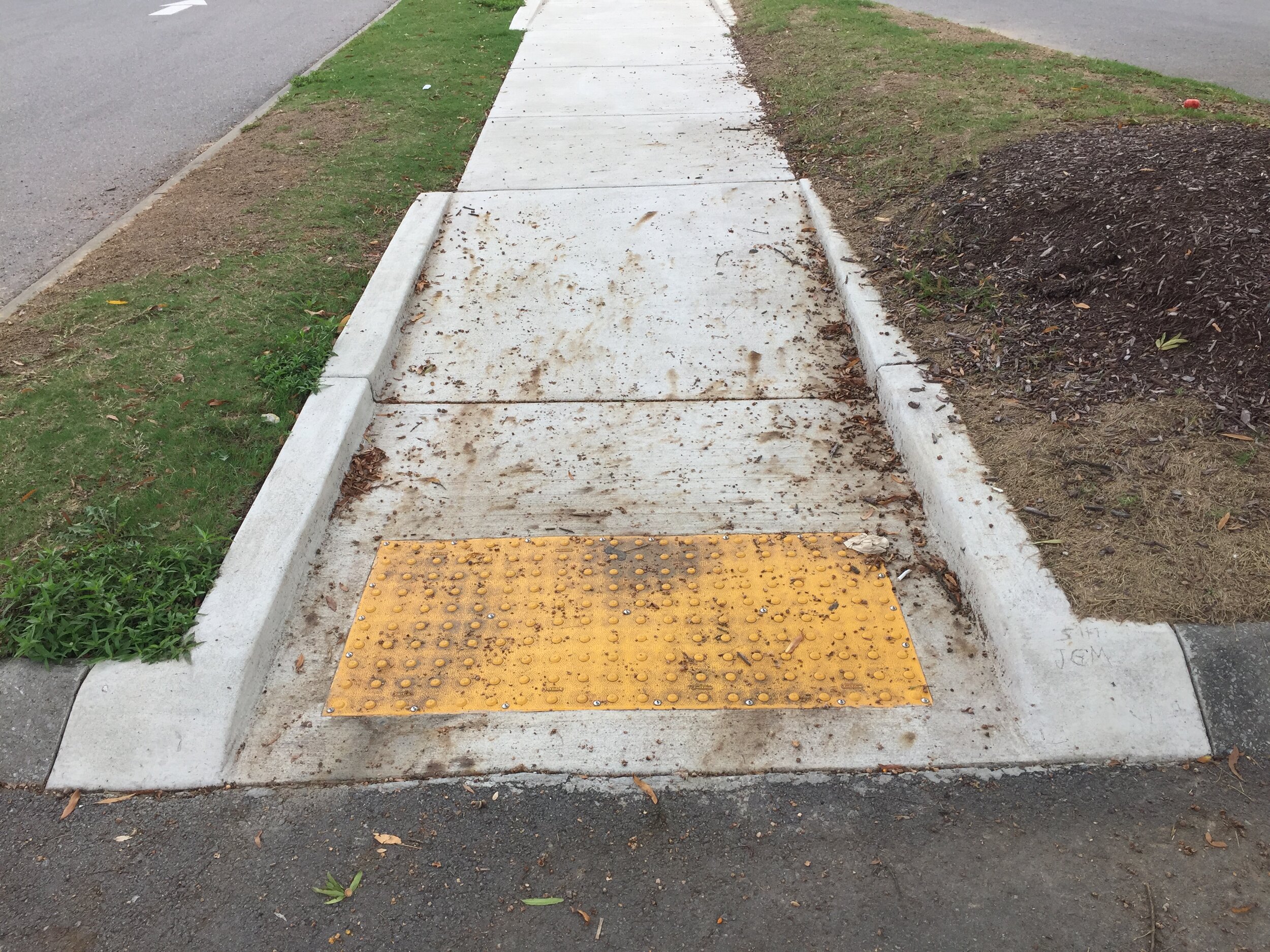Detectable Warnings for Accessible Routes as Defined by the ADA
Detectable Warning
2010 ADA Standard 106.5, defines a Detectable Warning as “A standardized surface feature built in or applied to walking surfaces or other elements to warn of hazards on a circulation path.” The graphic on the right is representative of a detectable warning at an accessible route where a walkway meets a vehicle parking lot.
Detectable warnings for accessible routes located at Title II and Title III facilities are required to comply with the Americans with Disabilities Act (ADA). This article will discuss the requirements for detectable warnings for accessible routes at State and local government facilities, public accommodations, and commercial facilities. These requirements are included in Department of Transportation (DOT) ADA Standard 406.8, 2010 DOJ [Department of Justice] ADA Standard 810.5.2, and 2010 DOJ ADA Standard 705. Additional information is posted in ADAAG R304.1.4.
The purpose of required detectable warnings is:
to indicate the boundary between pedestrian and vehicular routes where there is a flush rather than a curbed connection
to indicate a drop off at boarding platforms
Detectable warning surfaces are not intended to provide way-finding for pedestrians who are blind or have low vision.
These detectable warnings are required on curb ramps at:
public transit facilities such as rail stations, bus stations, airports, and public school transportation
Federal Highway Administration (FHWA) funded projects
public sidewalks.
Neither DOJ’s 2010 ADA Standards nor the ABA Standards, which apply to federally funded facilities, require detectable warnings on curb ramps but, State and local codes may require the detectable warnings. Furthermore, the United States Access Board is developing new guidelines that will address access to public rights-of-way, including detectable warnings on most curb ramps. Stay tuned.
Technical Requirements
DOT ADA Standard 406.8, Detectable Warnings, states, “A curb ramp shall have a detectable warning complying with [Standard] 705. The detectable warning shall extend the full width of the curb ramp (exclusive of flared sides) and shall extend either the full depth of the curb ramp or 24 inches (610 mm) deep minimum measured from the back of the curb on the ramp surface.” A common discrepancy is a detectable warning that does not extend the full width of the curb ramp. The photo below is representative.
Detectable Warning Does Not Extend Full Width of the Ramp




